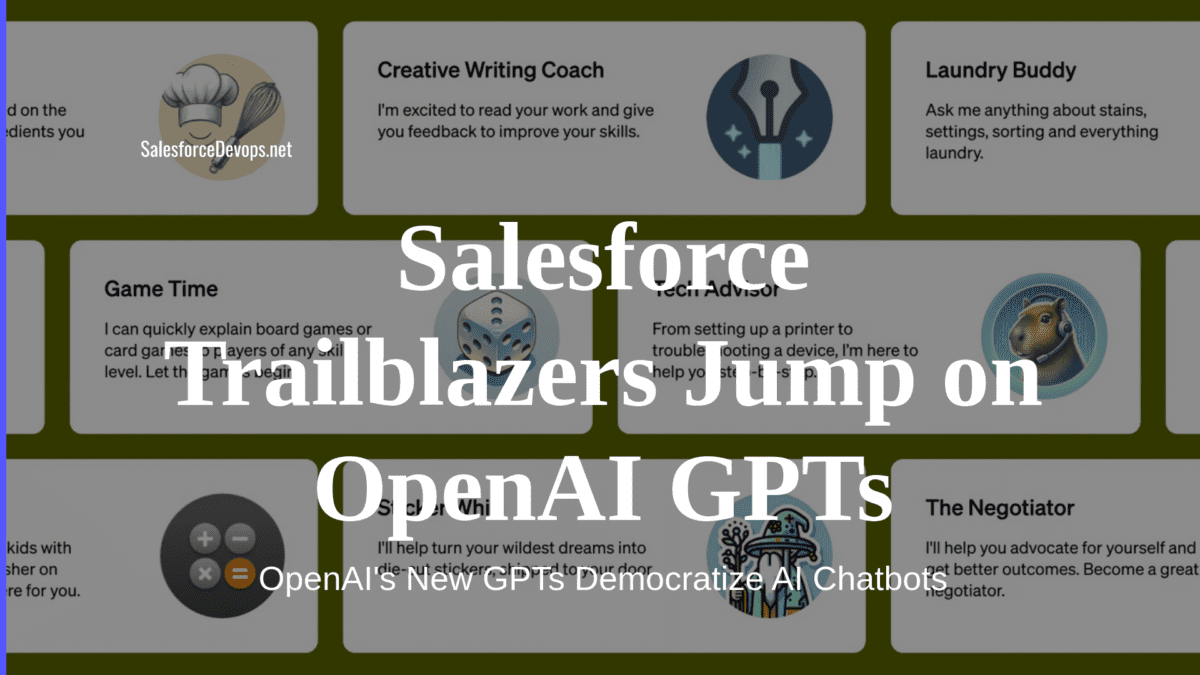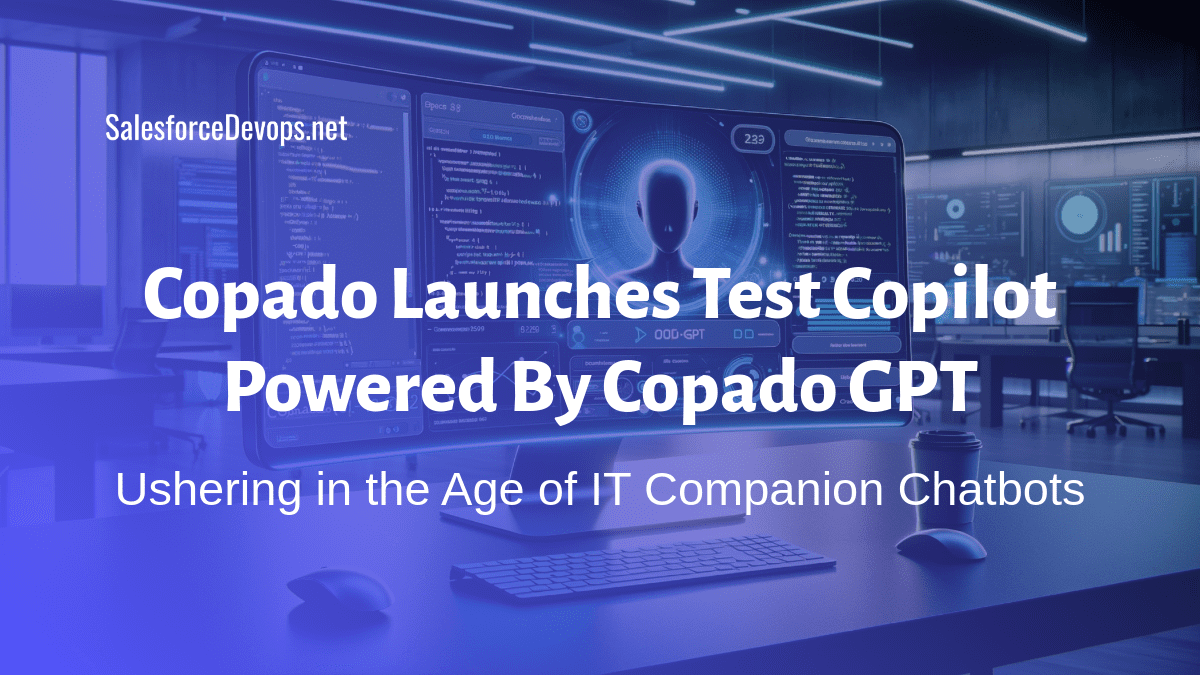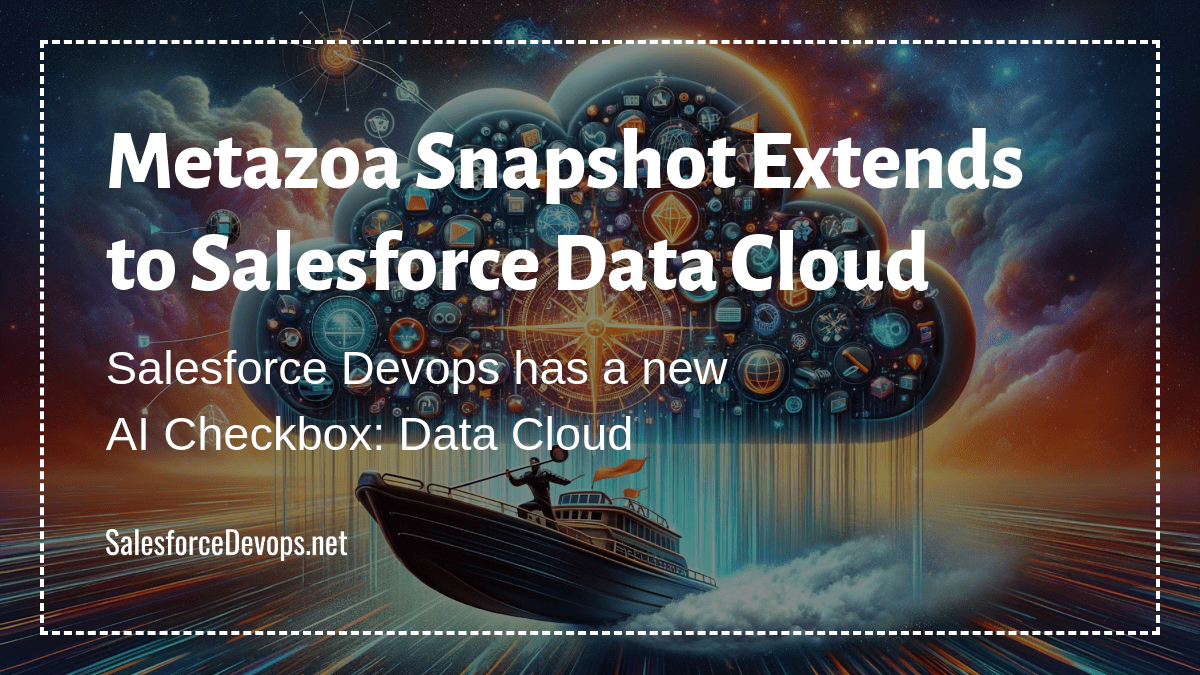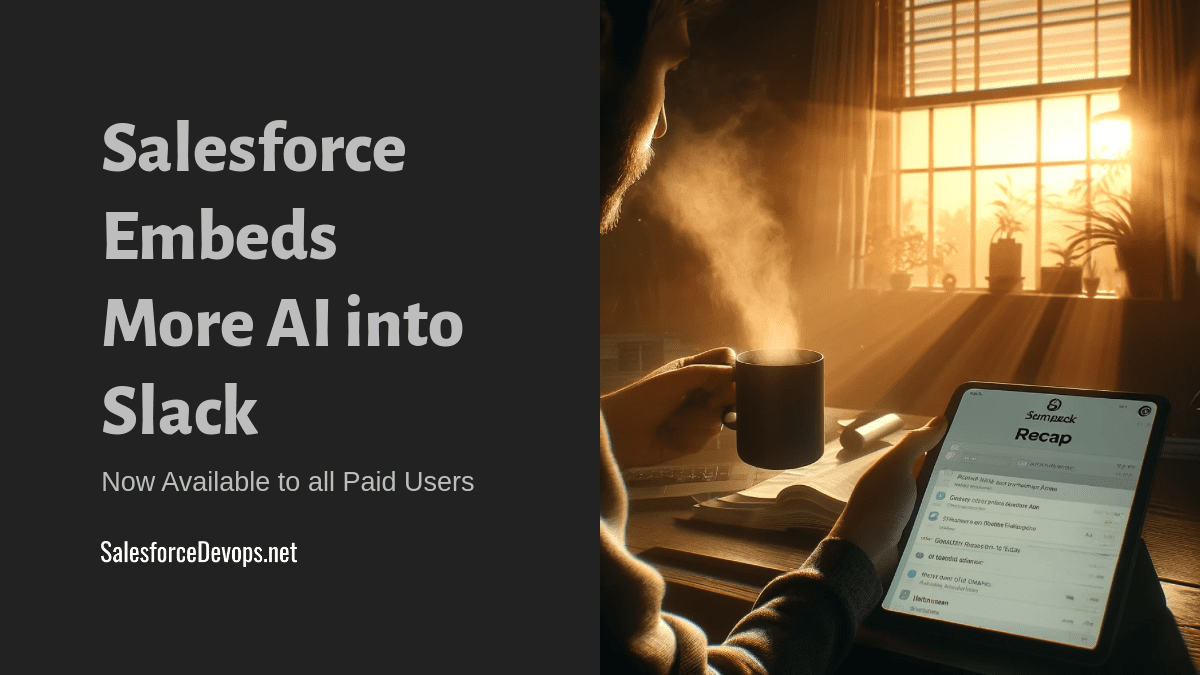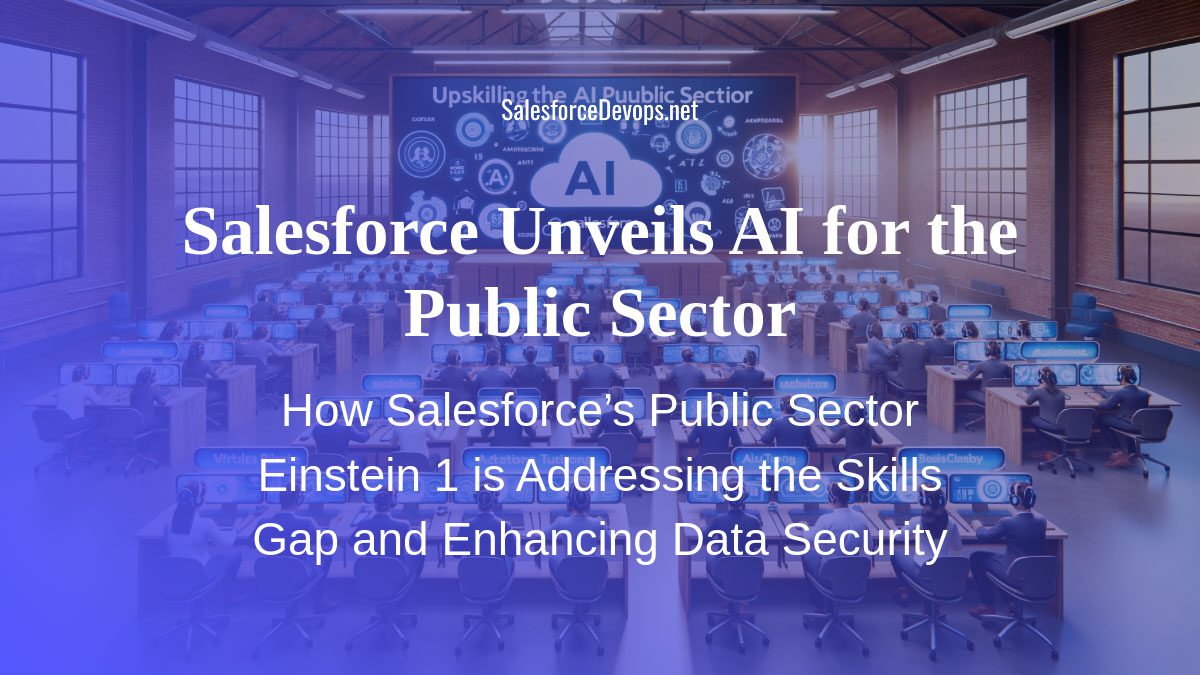Salesforce Trailblazers Jump on OpenAI GPTs
Last week OpenAI had its first DevDay where they revealed a slate of significant upgrades to their AI platform. The enhancements span OpenAI’s research models, developer tools, and commercial offerings. The company also unveiled a new tool called GPTs that lets anyone easily create customized versions of their popular AI chatbot, ChatGPT. The move promises to democratize access to artificial intelligence.
Table of contents
What are GPTs?
GPTs allows users to fine-tune ChatGPT for specific topics and tasks with no coding required. Custom bot creators can provide instructions, upload proprietary documents, integrate outside data sources, and choose desired capabilities like web searching or image generation.
GPTs and the new Assistants API implement the Executive Thinking Partner (ETP) concept. This is where a foundational LLM and a user engage in a multi-shot conversation grounded in proprietary data. I have previously written about ETPs and how they will evolve as a major killer app for AI adoption.
OpenAI will be launching a GPT Store where people can publish their bots publicly or share privately. Top GPTs may be featured by category and builders can potentially monetize popular creations. Not much is currently known about how unit economics will work. There is speculation that OpenAI will use the Spotify model, where creators get a cut of the base subscription.
Making new GPTs is remarkably easy and does not require any knowledge about semantic search or other AI concepts. In many ways, GPT offers a way to save ChatGPT-Plus Custom Instructions in a shortcut. If you have been switching out custom instructions, or saving system prompts in a text file, then making your own GPTs will be a big timesaver.
This represents a major step towards OpenAI’s goal of an AI assistant for every person. ChatGPT’s impressive language skills made it a viral hit, but it lacked customization. GPTs hands the reins to users.
SalesforceDevops.net GPT Launched
Given the ease of use, I decided to jump on the bandwagon and toss my own GPT into the ring. I wanted to make a Salesforce devops advisor and tutor. To prime the context I used an unpublished Salesforce devops book in DOC format, and I was able to upload that into the GPT’s knowledge base. I was also able to tap training data so it will base conversations on posts from the site.
Before making SalesforceDevops.net GPT I also made Salesforce Oracle, which is a GPT that has no file uploads or special knowledge added. In this case I followed the GPT setup conversation where I strongly emphasized the GPT to follow the Salesforce Well Architected guidelines.
I have also been making a course with the title “Evaluating Enterprise AI Adoption Strategies,” so I made an Enterprise AI Strategy Navigator GPT. To get the text from a giant 3 GB PowerPoint presentation, I had to write a Python program to perform the extraction. That naturally lead me to create yet another GPT called the Python Pathfinder!
A Creator’s Playground?
Another familiar Salesforce creator, Ian Gotts, who is founder and CEO of Elements.cloud, debuted several new GPTs:
- Salesforce Business Analysis Copilot
- Center of Excellence Copilot
- Salesforce Org Copilot
- Salesforce Org Discovery Copilot.
“I think the winners here are the people who’ve got great content,” commented Gotts about the advent of GPTs. “OpenAI’s recent release has put the power in the hands of those with great content – authors, bloggers, speakers. They can create GPTs that leverage that content,” added Gotts.
More Salesforce GPTs Launched
At least two more Salesforce consultants tossed their GPT hat into the ring in the days since OpenAI’s announcement. Not everyone is focused on being a creator, but just want to share something fun and handy.
One Utah-based Salesforce consulting partner, Scott Ohlund, said he was just having fun making Salesforce Sage, 20 year Salesforce Expert in the areas of Architecture, Consulting, Administration, Development and Business Analysis. “It was shockingly simple to create a Salesforce related custom GPT app. It took only minutes, and I haven’t had this much fun in a long while!”
Another Trailblazer, Cobey Maynard who is a Sr. Delivery Principal at consulting giant Slalom, enjoys creating content for the community. He founded SFDChandbook.com as a community knowledge hub. What better way to share it with Maynard’s new GPT, SFDC Companion: Your Salesforce mentor and companion architect.
“SFDC Companion has received some great feedback so far, both highly positive and opportunistic. This has helped reinforce the model in areas of accuracy and course correct inaccuracy,” said Maynard about his GPT creation.
Trailblazers React
“OpenAI is conducting a masterclass in leveraging the network effect of their platform,” said Chris Pearson, Salesforce Engineering Director at Jostens in Houston, Texas. Pearson compared no-code GPT builder to the early days of the Apple App Store when there was a “gold rush” of simple but novel apps. He believes the low barrier to build customized GPT chatbots will lead to a similar flood of basic bots, but expects some “novel and profound GPTs” to emerge and set the standard going forward.
He recommends learning the new technology now so organizations can adopt and exploit these powerful new capabilities. Pearson states, “Make no mistake, building GPTs requires little to no code, however, the GPTs that surprise and delight users will likely use some form of external integration or connectivity.”
Michael Leach, CEO of AI-enabled Salesforce ISV iDialogue, believes niche expert GPTs could replace simple website landing pages, providing a more interactive way for users to “learn more” about a topic.
However, Leach notes many GPTs lack helpful conversation starters to guide users. He states, “I’m lost, however, on how to engage with most GPTs without the conversation starters.” And he says influencers and curators are needed to highlight the most useful ones, sharing “Top 10 lists” and recommendations. Overall, Leach is excited about the possibilities of customized GPTs, but believes work is needed to make them truly user-friendly and discoverable for the average person.
Questions in a Firestorm of Activity
In just one week since they were announced, a quick Google search of “site:https://chat.openai.com gpt” reveals hundreds of new GPTs in several languages have already been published and crawled by Google. The variety of subjects is endless, and with such a low barrier to entry, GPTs seem to be growing exponentially.
But it’s not entirely clear how the GPT market will move forward. As Trailblazers Leach and Pearson noted, there will be issues with discovery and getting the “flashlight apps” out of the way. Monetization is also a huge question. How will OpenAI handle the case of someone monetizing someone else’s data? If my Salesforce Oracle GPT was super-successful, I’d basically be making revenue off Salesforce documentation.
OpenAI has preemptively blunted this criticism by offering a Copyright Shield service where they will offer to help Enterprise and API users who are sued by an original copyright holder. But that doesn’t cover the consumer apps, so the rights and responsibilities of GPT authors remain unclear.
One thing is certain, though. OpenAI has unleashed another wave of disruptive innovation with GPTs and the Assistant API. Fortunately, for those who choose to keep their heads down and avoid the AI talk, this latest wave of innovation has simplified many of the backend processes which would be needed to implement an executive thinking partner. Now, with these OpenAI innovations, more creators and innovators can take the easy road to democratizing their AI creations.
